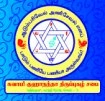

திரு அருணகிரிநாதர் அருளிய
திருப்புகழ்
Sri AruNagirinAthar's
Thiruppugazh

 |  திரு அருணகிரிநாதர் அருளிய Sri AruNagirinAthar's |  |
|---|
| (இந்த வலைத்தளத்தைப் பயன்படுத்துவதற்கு முன்பு எனது முக்கியக் குறிப்பைப் படியுங்கள் - நன்றி). (Please read my important note before using this website - Thank You). |
| திருப்புகழ் 188 மூலம் கிளர் ஓர் (பழநி) Thiruppugazh 188 mUlamkiLarOr (pazhani) |
 |  | தமிழிலும் ஆங்கிலத்திலும் பொருள் எழுதியது ஸ்ரீ கோபால சுந்தரம் Meanings in Tamil and English by Sri Gopala Sundaram | English PDF அமைப்பு in PDF | ஆலய வரிசை அகரவரிசை எண்வரிசை தேடல் venue list alphabetical numerical search |
|
தானந்தன தானன தானன தானந்தன தானன தானன தானந்தன தானன தானன ...... தனதான ......... பாடல் ......... மூலங்கிள ரோருரு வாய்நடு நாலங்குல மேனடு வேரிடை மூள்பிங்கலை நாடியொ டாடிய ...... முதல்வேர்கள் மூணும்பிர காசம தாயொரு சூலம்பெற வோடிய வாயுவை மூலந்திகழ் தூண்வழி யேயள ...... விடவோடிப் பாலங்கிள ராறுசி காரமொ டாருஞ்சுட ராடுப ராபர பாதம்பெற ஞானச தாசிவ ...... மதின்மேவிப் பாடுந்தொனி நாதமு நூபுர மாடுங்கழ லோசையி லேபரி வாகும்படி யேயடி யேனையும் ...... அருள்வாயே சூலங்கலை மான்மழு வோர்துடி வேதன்தலை யோடும ராவிரி தோடுங்குழை சேர்பர னார்தரு ...... முருகோனே சூரன்கர மார்சிலை வாளணி தோளுந்தலை தூள்பட வேஅவர் சூளுங்கெட வேல்விடு சேவக ...... மயில்வீரா காலின்கழ லோசையு நூபுர வார்வெண்டைய வோசையு மேயுக காலங்களி னோசைய தாநட ...... மிடுவோனே கானங்கலை மான்மக ளார்தமை நாணங்கெட வேயணை வேள்பிர காசம்பழ னாபுரி மேவிய ...... பெருமாளே. ......... சொல் விளக்கம் ......... மூலம் கிளர் ஓர் உருவாய் நடு ... மூலாதாரத்தினின்றும் மேற்பட்டு எழுகின்ற ஓர் உருவமாக, உடலின் நடுவில் நாலு அங்குலம் மேல் நடு வேர் இடை மூள் பிங்கலை ... நான்கு அங்குல அளவின் மேல், சுழுமுனை, இடை கலை, தோன்றும் பிங்கலை* என்னும் நாடி ஒடு ஆடிய முதல் வேர்கள் மூணும் ... நாடிகளுடன் கலந்து, முதல் வேர்களாகிய இந்த மூன்று நாடிகளும் பிரகாசம் அதாய் ஒரு சூலம் பெற ஓடிய வாயுவை ... (ஒவ்வொரு நாடியின் புறமும்) பிரகாசமான ஒளியைப் பரப்பி, ஒப்பற்ற சூலாயுதம் போல ஓடுகின்ற பிராண வாயுவை மூலம் திகழ் தூண் வழியே அளவிட ஓடி ... முதுகுத் தண்டிலுள்ள சுழு முனை வழியில் கணக்காக ஓடச்செய்து, (பின்னர் அது) பாலம் கிளர் ஆறு சிகாரம் ஒடு ஆரும் ... (நெருப்பாறு, மயிர்ப்பாலம் என்னும்) நெற்றியில் விளங்கும் ஆறாவது ஆதாரமாகிய ஆக்ஞை நிலையில்** (சிவனைக் குறிக்கும்) சிகார அக்ஷரத்தோடு பொருந்தி நிற்கும். சுடர் ஆடு பராபர பாதம் பெற ஞான சதாசிவம் அதின் மேவி ... நிறைந்து (எல்லா நிலைகளிலும்) ஒளி வீசுகின்ற பரம் பொருளின் திருவடிகளைப் பெறுதற்கு ஞானமயமான சதாசிவ நிலையை அடைந்து, பாடும் தொனி நாதமும் நூபுரம் ஆடும் கழல் ஓசையிலே ... (அவ்விடத்தில் கேட்கப்படும்) பாடல் ஒலியின் நாதத்திலும் சிலம்புகளின் கழல் ஒலியிலும் பரிவாகும்படியே அடியனையும் அருள்வாயே ... அன்பு பொருந்தும்படியாக அடியேனுக்கு அருள் புரிவாயாக. சூலம் கலை மான் மழு ஓர் துடி ... திரி சூலம், கலைமான், மழுவாயுதம், ஒப்பற்ற உடுக்கை, வேதன் தலையோடும் அரா ... பிரமனின் கபாலம் இவைகளுடன் பாம்பு, விரிதோடு குழைசேர் பரனார் தரும் முருகோனே ... விளங்கும் தோடு, குழை இவை சேர்ந்துள்ள சிவபெருமான் பெற்ற முருகனே, சூரன் கரம் மார் சிலை வாள் அணி தோளும் தலை தூள் படவே ... சூரனுடைய கை, மார்பு, வில், வாள், அழகிய தோளும், தலையும் தூள்படும்படியாகவும், அவர் சூளும் கெட வேல் விடு சேவக மயில் வீரா ... அவன் (தேவர்களைச் சிறையினின்றும் விடேன் என்று) செய்த சபதமும் பாழாகவும் வேலைச் செலுத்திய தலைவனே, மயில் வீரனே, காலின் கழல் ஓசையும் நூபுரம் வார் வெண்டைய ஓசையும் ... காலில் அணிந்துள்ள கழலின் ஒலியும், சிலம்பொலியும், வீரக் காலணியின் இடிபோன்ற ஒலியும், உக காலங்களின் ஓசை அதாக நடம் இடுவோனே ... யுக முடிவைக் காட்டும் ஓசைகளாகத் திகழும்படி நடனம் புரிபவனே, கானம் கலை மான் மகளார் தமை ... வள்ளிமலைக் காட்டில் வந்த கலை மானின் மகளாகிய வள்ளியை நாணம் கெடவே அணை வேள் ... கூச்சம் ஏதுமின்றி அணைக்கின்ற தலைவனே, பிரகாசம் பழனா புரி மேவிய பெருமாளே. ... ஒளி வீசும் பழனியில் வீற்றிருக்கும் பெருமாளே. |
* இங்கு சிவயோக முறைகள் விளக்கப்பட்டுள்ளன. அதன் சுருக்கம் வருமாறு: நாம் உள்ளுக்கு இழுக்கும் காற்றுக்குப் 'பூரகம்' என்றும், வெளிவிடும் காற்றுக்கு 'ரேசகம்' என்றும் பெயர். உள்ளே நிறுத்திவைக்கப்படும் காற்றுக்கு 'கும்பகம்' என்று பெயர். உட் கொள்ளும் பிராணவாயு உடலில் குறிப்பிட்ட 'ஆதாரங்கள்' (நிலைகள், சக்கரங்கள்) மூலமாகப் படிப்படியாகப் பரவி, மேல் நோக்கிச் சென்று, தலையில் 'பிரம கபால'த்தில் உள்ள 'ஸஹஸ்ராரம்' (பிந்து சக்கரம்) என்ற சக்கரத்துக்குச் செல்லும். இந்த ஐக்கியம் ஏற்படும்போது, அமுத சக்தி பிறந்து, ஆறு ஆதாரங்களுக்கும் ஊட்டப்பட்டு, மீண்டும் அதே வழியில் 'மூலாதார'த்தை வந்து அடையும். இந்த ஆதாரங்களை ஒழுங்கு படுத்தும் வகையில் மூன்று 'மண்டல'ங்களும் (அக்கினி, ஆதித்த, சந்திர மண்டலங்கள்), பத்து 'நாடி'களும் (இடைகலை, பிங்கலை, சுழுமுனை முதலியன) உள்ளன. 'இடைகலை' பத்து நாடிகளுள் ஒன்று. இடது நாசியால் விடும் சுவாசம். 'பிங்கலை' பத்து நாடிகளுள் ஒன்று. வலது நாசி வழியால் விடும் சுவாசம். 'சுழு முனை' இடைகலைக்கும் பிங்கலைக்கும் இடையில் உள்ளது. 'சுழு முனை' ஆதாரம் ஆறிலும் ஊடுருவி நிற்பது. 'இடைகலை'யும், 'பிங்கலை'யும் ஒன்றுக்கொன்று பின்னி நிற்பன. சுவாச நடப்பை 'ப்ராணாயாமம்' என்ற யோக வன்மையால் கட்டுப்படுத்தினால் மன அமைதி ஏற்படும். |
** ஆதாரங்களின் பெயர்களும், உடலில் இருக்கும் இடம், உரிய ஐம்பூதங்கள், அனுட்டிக்கும்போது மலர் வடிவங்களின் அமைப்பு, அக்ஷரக் குறிப்பு ஆகியவை கீழே தரப்பட்டுள்ளன. மேலும் இந்த ஆதாரங்களுக்கு உரிய தலங்கள், கடவுளர்கள் பெயர்களும் கொடுக்கப்பட்டுள்ளன. | ||||||
| ஆதாரம் மூலாதாரம் சுவாதிஷ்டானம் மணிபூரகம் அநாகதம் விசுத்தி ஆக்ஞா பிந்து சக்கரம் (துவாதசாந்தம், ஸஹஸ்ராரம், பிரமரந்திரம்) | இடம் குதம் கொப்பூழ் மேல்வயிறு இருதயம் கண்டம் புருவத்தின் நடு கபாலத்தின் மேலே | பூதம் மண் அக்கினி நீர் காற்று ஆகாயம் மனம் | வடிவம் 4 இதழ் கமலம் முக்கோணம் 6 இதழ் கமலம் லிங்கபீடம் நாற் சதுரம் 10 இதழ் கமலம் பெட்டிப்பாம்பு நடு வட்டம் 12 இதழ் கமலம் முக்கோணம் கமல வட்டம் 16 இதழ் கமலம் ஆறு கோணம் நடு வட்டம் 3 இதழ் கமலம் 1008 இதழ் கமலம் | அக்ஷரம் ஓம் ந(கரம்) ம(கரம்) சி(கரம்) வ(கரம்) ய(கரம்) | தலம் திருவாரூர் திருவானைக்கா திரு(வ) அண்ணாமலை சிதம்பரம் திருக்காளத்தி காசி (வாரணாசி) திருக்கயிலை | கடவுள் விநாயகர் பிரமன் திருமால் ருத்திரன் மகேசுரன் சதாசிவன் சிவ . சக்தி ஐக்கியம் |
| 'wikisource' reference links for this song இப்பாடலுக்கான 'விக்கிமூலம்' இணையப் பக்கங்கள் pg 1.460 pg 1.461 pg 1.462 pg 1.463 WIKI_urai Song number: 190 goto wiki alpha list (Please note: Kaumaram.com is NOT responsible for accuracy and contents of external links) |
 | 'குருஜி' ராகவன் அவர்களுடன் திருப்புகழ் அன்பர்கள் 'Guruji' Ragavan and Thiruppugazh Anbargal பாடகர் பக்கத்திற்கு to singer's page |
|
 | ஸ்ரீ மஹா பெரியவா திருப்புகழ் சபை & சுவாமி குஹாநந்தா திருப்புகழ் சபை (சேலம்) Sri Maha Periyava Thirupugazh Sabha & Swamy Gughanandha Thirupugazh Sabha (Salem) |  பாடகர் பக்கத்திற்கு பாடகர் பக்கத்திற்கு to singer's page |
 | சுவாமி குஹாநந்தா திருப்புகழ் சபை (சேலம்) இப்பாடலின் பொருள் Swamy Gughanandha Thirupugazh Sabha (Salem) meanings in Tamil |  |
(Please note: Kaumaram.com is NOT responsible for accuracy and contents of external links) top |
|
Song 188 - mUlam kiLar Or (pazhani) mUlankiLa rOruru vAynadu nAlangula mEnadu vEridai mULpingalai nAdiyo dAdiya ...... muthalvErkaL mUNumpira kAsama thAyoru cUlampeRa vOdiya vAyuvai mUlanthikazh thUNvazhi yEyaLa ...... vidavOdip pAlankiLa rARusi kAramo dAruncuda rAdupa rApara pAthampeRa njAnasa thAsiva ...... mathinmEvip pAdunthoni nAthamu nUpura mAdunkazha lOsaiyi lEpari vAkumpadi yEyadi yEnaiyum ...... aruLvAyE cUlang kalai mAnmazhu vOrthudi vEthanthalai yOduma rAviri thOdunkuzhai sErpara nArtharu ...... murukOnE cUrankara mArsilai vALaNi thOLunthalai thULpada vEavar cULunkeda vElvidu sEvaka ...... mayilveerA kAlinkazha lOsaiyu nUpura vArveNdaiya vOsaiyu mEyuka kAlangkaLi nOsaiya thAnada ...... miduvOnE kAnankalai mAnmaka LArthamai nANankeda vEyaNai vELpira kAsampazha nApuri mEviya ...... perumALE. ......... Meaning ......... mUlankiLa rOruru vAy: It is a form of light roused from the MUlAdhAra centre (of the Kundalini ChakrA); nadu nAlangula mEnadu vEridai mULpingalai nAdiyo dAdiya muthalvErkaL mUNum: at the central part of the body, four inches above the origin, the flame mixes with the three nerves (nAdis) of susumna, idakala and pingkala* pira kAsama thAyoru cUlampeRa vOdiya vAyuvai: and amid the intense brightness of the auras (on each side of the nAdis), ignited by the life-giving PrANa VAyu (oxygen) passing through like a burning trident, mUlanthikazh thUNvazhi yEyaLa vidavOdip: and flowing in measured quantity along the Susumna nerve located in the spinal chord, pAlankiLa rARusi kAramodu: and (then it culminates) in the sixth chakrA (centre) called AjnA** (meaning, Command), (situated on the forehead across a bridge of hairs over the river of fire), in association with the letter "Si" (denoting SivA); Aruncuda rAdupa rApara pAthampeRa njAnasa thAsivam athinmEvi: the light shines throughout the chakrA (covering all centres) which is the Supreme Effulgence whose hallowed feet can be discerned only by attaining the Omniscient SadAsiva state; pAdunthoni nAthamu nUpuram Adunkazha lOsaiyi lE: (at that stage) the divine music (nAdham) is heard along with the jingling of Your anklets parivAkumpadi yEyadi yEnaiyum aruLvAyE: which, with Your blessings, I wish to contemplate with devotion! cUlang kalai mAnmazhu vOrthudi vEthanthalai yOduma rAviri thOdunkuzhai sErpara nArtharu murukOnE: Oh MurugA! You are the Son of Lord SivA Who holds in His hands a Trident, a deer, a pick-axe, a unique hand-drum, a skull of one of the heads of BrahmA, and Who also wears serpents, elegant studs and large ear-hoops as jewels! cUrankara mArsilai vALaNi thOLunthalai thULpadavE: Shattering the arms, chest, bow, sword, strong shoulders and the head of the demon SUran, avar cULunkeda vElvidu sEvaka mayilveerA: and destroying SUran's vow (that He would never release the celestials from his prisons), You wielded the Spear, Oh valorous Lord mounting the peacock! kAlinkazha lOsaiyu nUpuravArveNdaiya vOsaiyumE: The thunderous sounds from all kinds of jingling anklets marking Your triumph yuka kAlangkaLi nOsaiya thAnadamiduvOnE: symbolise the sounds heard at the end of aeons when You dance, Oh Lord! kAnankalai mAnmaka LArthamai nANankeda vEyaNai vEL: You unabashedly embraced VaLLi, the daughter of the deer that came to the VaLLimalai forest, Oh Master! pirakAsampazha nApuri mEviya perumALE.: You have Your abode in the dazzling town of Pazhani, Oh Great One! |
* In this song, several Siva-yOgA principles are explained: The inhaled air is known as 'pUragam' and the exhaled air is 'rechagam'. The retained air is 'kumbagam'. The oxygen that enters the body climbs up step by step through several centres, known as 'chakrAs' and ultimately reaches 'sahasrAram' or 'bindhuchakram' on the top of the skull. At that point of union, nectar flows from that chakrA and seeps through and soaks the six centres of the body and returns to the basic chakrA, 'mUlAthAram'. Three zones (namely, the sun zone, the moon zone and the fire zone) and ten nerves ('nAdis') govern the six centres; the principal nerves are 'susumna', 'idaikala' and 'pingala'. idakala: one of the ten 'nAdis' (nerves), when inhalation takes place through the left nostril; pingala: one of the ten 'nAdis' (nerves), when inhalation takes place through the right nostril; susumna: one of the ten 'nAdis' (nerves), situated between the above two 'nadis', and running through the spinal chord covering all the six centres of 'kundalini'. ('idakala' and 'pingala' are entwined around 'susumna'). If breathing is controlled through a yOgA called 'praNAyAmA', the mind becomes tranquil. |
** The names of the chakrA centres, the deities, the elements, the zones of the body where they are located, the shape of the chakrAs, the description of the flowers in the chakrAs, the letters of the ManthrA governing them and the temple-towns representing them are given in the following chart: | ||||||
| ChakrA mUlAthAram swAthishtAnam maNipUragam anAgatham visudhdhi AgnyA Bindu chakkaram (DhwAdhasAntham, SahasrAram, Brahma-ranthiram) | Body Zone Genitals Belly-button Upper belly Heart Throat Between the eyebrows Over the skull | Element Earth Fire Water Air Sky Mind | Shape 4-petal lotus Triangle 6-petal lotus Lingam Square 10-petal lotus cobra in box central circle 12-petal lotus Triangle lotus circle 16-petal lotus Hexagon central circle 3-petal lotus 1008-petal lotus | Letter Om na ma si va ya | Temple ThiruvArUr ThiruvAnaikkA Thiru aNNAmalai Chidhambaram ThirukkALaththi VaranAsi (kAsi) Mt. KailAsh | Deity VinAyagar BrahmA Vishnu RUdhran MahEswaran SathAsivan Siva-Sakthi Union |
| தமிழில் PDF அமைப்பு ஆலய வரிசை அகரவரிசை எண்வரிசை |
| ... https://kaumaram.com ... The website for Lord Murugan and His Devotees முகப்பு அட்டவணை மேலே home contents top |
Kaumaram.com is a non-commercial website. This website is a dedication of Love for Lord Murugan. PLEASE do not ask me for songs about other deities or for BOOKS - This is NOT a bookshop - sorry. Please take note that Kaumaram.com DOES NOT solicit any funding, DIRECTLY or INDIRECTLY. © Copyright Kaumaram dot com - 2001-2040 COMMERCIAL USE OF MATERIAL IN THIS WEBSITE IS NOT PERMITTED. Please contact me (the webmaster), if you wish to place a link in your website. email: kaumaram@gmail.com Disclaimer: Although necessary efforts have been taken by me (the webmaster), to keep the items in https://kaumaram.com safe from viruses etc., I am NOT responsible for any damage caused by use of and/or downloading of any item from this website or from linked external sites. Please use updated ANTI-VIRUS program to rescan all downloaded items from the internet for maximum safety and security. மேலே top |